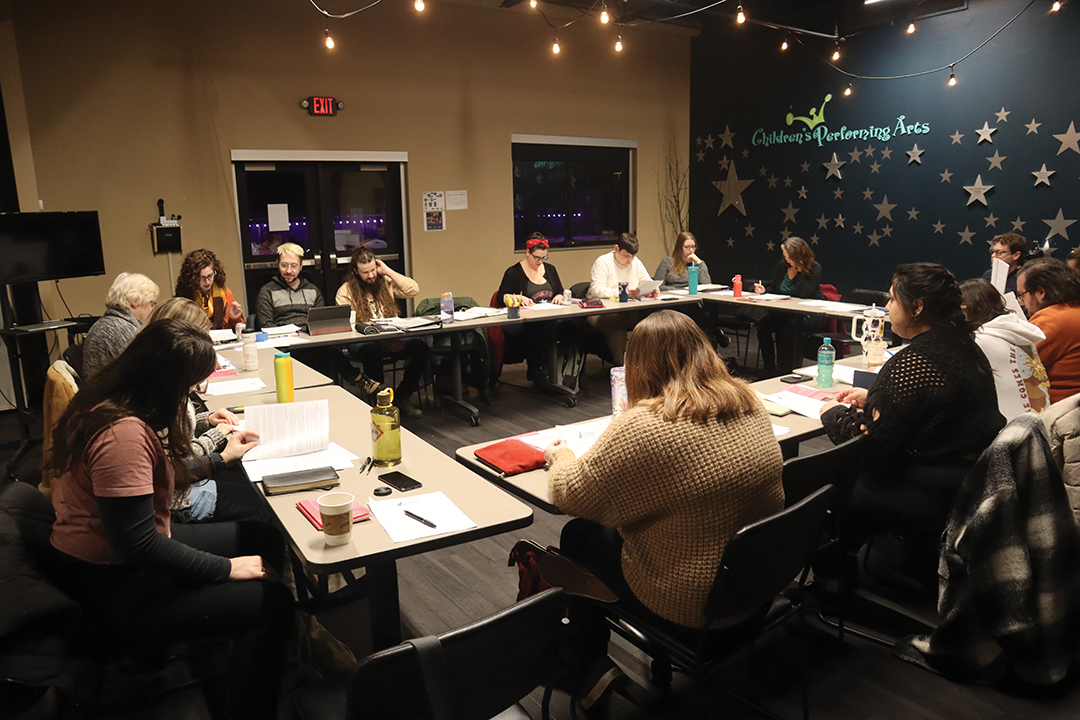
Photo: Tate Carlson
Author Joe Kimball reflects on his years reporting on the case.
On his way to Askov, Minnesota, on a Monday morning, Joe Kimball’s ears perked up at the news on the radio: Police were reporting a double homicide in Duluth. It was June 27, 1977, and the Minneapolis Tribune reporter was en route to cover a story on strawberry farmers. Now he debated—intriguing murder case or … strawberry fields? In minutes, Kimball was on the phone with the Tribune office. With permission to investigate the story, he made his way up I-35, stopping at the police station where he was directed to Glensheen Mansion, about to join a throng of police and reporters already at the crime scene.
It turned out that heiress Elisabeth Congdon and her nurse, Velma Pietila, had been slain at the mansion on Lake Superior. Forty years later, Kimball, a White Bear Lake resident, reflects on the case and the experience he gained as a cub reporter. “In that first summer, there was one article a day . . . during the trial, we ran one every day,” he says. In response to how many articles he’s written to this day on the high-profile murder case of Elisabeth Congdon, Kimball replies, “hundreds.”
When the mansion, now owned by the University of Minnesota-Duluth, was opened to the public in the early 1980s, Kimball and his wife, author Julie Kramer, went on one of the first tours. Kimball was taken aback when during the tour the docents referred to Miss Congdon as having “passed away.” He balked. “You know that she was violently murdered, right?” Kimball inquired. “We can’t talk about that,” the guides hastily replied. Instead, they elaborated on the estate and the philanthropic nature of the Congdon family.
Kimball wasn’t the only one surprised by the hushed attitude towards the murders. “People would call me and say, ‘We just went on that tour. Which bedroom was it? They won’t tell us anything.’” Kimball says. “It’s a great tour, a beautiful house and gorgeous gardens,” he adds. “But it’s got this other element that’s part of its landscape, and I really felt people wanted and needed to know more about that. So that’s when I got the idea of doing a book.”
Kimball gathered information on the case and ensuing trials and published, Secrets of the Congdon Mansion: The Unofficial Guide to Glensheen and the Congdon Murders, a few years after the murders. After a few days in print, bookstores in the Twin Cities called Kimball clamoring for copies “because there was this pent-up demand for it,” Kimball says. The 104-page book draws the readers into the intrigue, mystery, horror and fascination of the case, which has long intrigued residents and out-of-state visitors alike.
In addition to information about the two prime murder suspects, Elisabeth’s troubled daughter Marjorie Caldwell and her husband, Roger, the book also provides character profiles of other key characters. From explanations of motives (an early inheritance) and details of how the perpetrator entered Congdon’s bedroom to diagrams of the mansion’s layout and a chronology of events, the book covers many details visitors don’t get from the tour.
“This story has had remarkable staying power as far as crime and murder in Minnesota history,” says Kramer, the author of Stalking Susan and the popular Riley Spartz crime novels. “The book has stayed in print for more than 30 years because of all the interest in it, and it [surged in] popularity again because of the anniversary this summer.”
The intriguing tale has also manifested itself in more than one form: the musical Glensheen ran for the third time last summer at St. Paul’s History Theatre. Prior to its first run in 2015, the playwright Jeffrey Hatcher and composer Chan Poling consulted Kimball as a source to create the play’s characters. And does Kimball like how the musical turned out? “If someone asks me if they should go I say, yes, absolutely,” he says. “I like what they’ve done. The music is great, and it catches enough of the sadness to show that real people here were killed, the tragedy of it.”
After 40 years, Kimball still enjoys sharing what he’s learned. This year he’ll give more than 20 talks, where he answers questions about the murders, trials and details about his book from curious attendees. He doesn’t seem to mind his long-time association with the Glensheen murders. And one thing is for sure: “It’ll definitely be in your obit,” Kramer quips.
In all seriousness, though, Kimball says, “It was an amazing case for a rookie reporter to stumble onto. So the good news is I had the run of one of these great tragic murder cases in Minnesota history. The bad news is I peaked early—those things don’t come along very often, so I was fortunate the paper let me cover it all those years.”






















